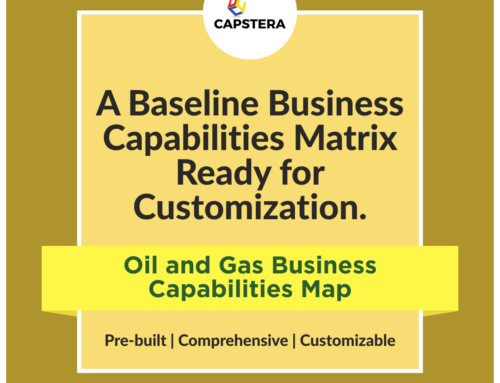
Defining a Technical Solution using Business Capabilities:
There is feeling Business strategists generally reside in ivory towers and produce a strategy that is in the stratosphere. If you have read strategy pillars such as the following, that feeling is reinforced in spades:
“We will offer the best customer experience in the industry.”
We will optimize our supply chain by eliminating too many layers.”
“We want to extend our market leadership by proliferating into various market niches.”
These general statements may be OK as bold strategy pillars, provided additional depth and detail exist. However, the problem is often no more meat around the bone. You are not alone if these strategy statements make you wonder how to realize these vague generalities into technical solutions.
Business capability mapping can help business architects explore and elicit additional detail and capture the core ingredients of a capability that will drive the business strategy.
The highly paid strategy consultants and internal strategy folks are far removed from IT, and the documented strategy is superficial, filled with superlatives, and details are sparse.
Since understanding strategy is a prerequisite to execution optimization, what is the best way to translate ambiguous strategy into actionable architecture?
Good question: This is where business capabilities (and capability modeling) come in. Business capability mapping can help business architects explore and elicit additional detail and capture the core ingredients of a capability that will drive the business strategy.
To have this intelligent and informed conversation, business architects must possess business knowledge and conduct the sessions in business speak, not as technical geeks.
For example, if you were to explore and translate “We will offer the best customer experience in the industry,” you would need to do the following:
Steps for Defining a Technical Solution using Business Capabilities:
- Understand the business motivation and what problem the strategy is trying to solve.
- Assess the customer experience’s current state, the desired state, and the gap thereof.
- Map the operational, organizational, product, and information capabilities needed to achieve the business strategy of gaining a better customer experience.
- Analyze the state of the capabilities and develop heat maps and desired target state.
- Capture the capability semantics, connectors, and collaboration needs.
- Map the customer experience processes and value streams
- Assign service level expectations (SLE) and key performance indicators (KPIs)
- Document the new features and functionality required to evolve the capabilities to their desired state.
- Provide additional color and context thru use cases, user personas, and customer journey mapping.
Helping businesses think in relatively abstract terms based on a business’s foundational entities will be a valuable exercise. Capabilities are the glue that links the strategy to execution and provides a solid blueprint and business definition for building better technology solutions.



